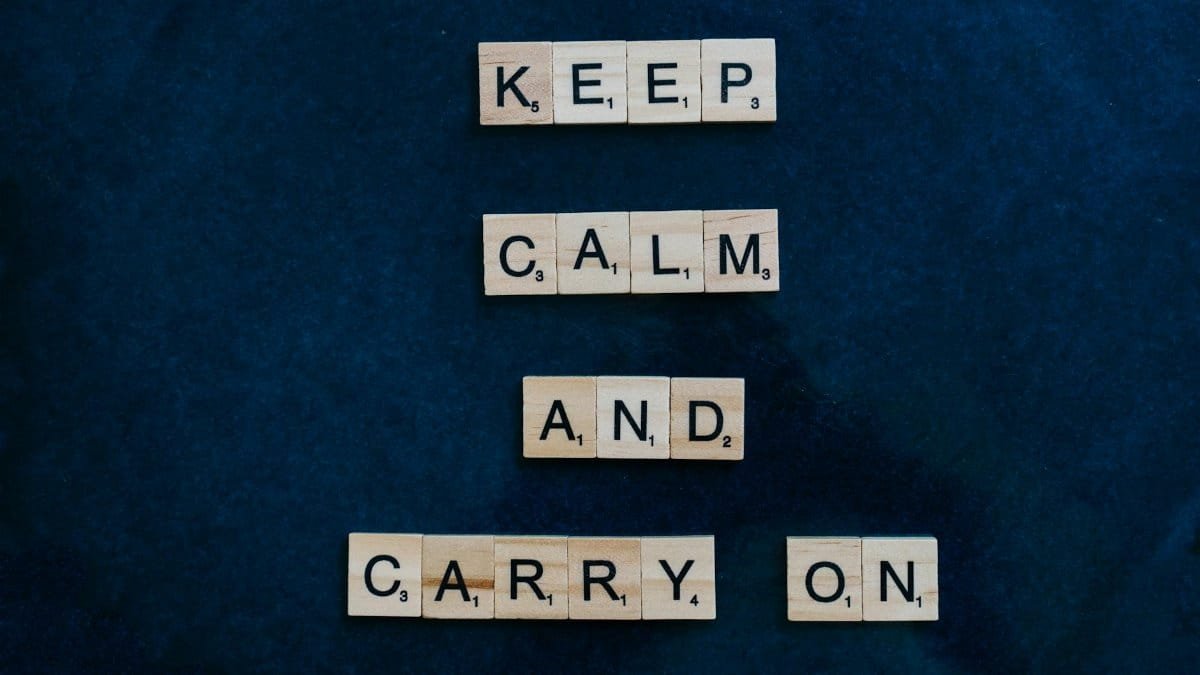In a world that prizes hustle and unflappable strength, what happens when we admit that true resilience might start with a deep breath and a moment of quiet surrender? It’s a question more Americans are grappling with as burnout rates climb. A recent survey from the American Psychological Association showed that 77% of workers experienced work-related stress in the past month, pushing many to seek something beyond sheer grit. Enter resilience calm—a subtle yet powerful approach that blends emotional steadiness with the ability to bounce back. It’s not about powering through chaos without flinching. Instead, it invites us to pause, acknowledge inner turmoil, and rebuild from there. This shift feels especially relevant in 2025, as hybrid work models and economic uncertainties test our limits. For middle-aged adults juggling careers, families, and personal growth, ignoring this form of resilience can lead to quiet exhaustion. But embracing it? That might just unlock the unseen strength we’ve been overlooking all along.
The Myth of Unbreakable Strength

We’ve long celebrated resilience as a badge of invincibility. Think of the cultural icons: the athlete who pushes past injury, the entrepreneur who rises from failure without a scratch. Yet this ideal often masks a deeper truth. Real resilience isn’t about never breaking. It’s about mending in ways that foster lasting calm.
Consider Sarah, a 45-year-old teacher from Chicago. She spent years suppressing stress from overcrowded classrooms and endless grading. “I thought being strong meant ignoring the fatigue,” she shared in a conversation last fall. But when a health scare forced her to slow down, she discovered resilience calm through simple mindfulness practices. It wasn’t dramatic. Just daily walks where she let thoughts drift without judgment.
Research backs this up. A study from the University of California, Berkeley, found that individuals who practiced self-compassion during setbacks reported lower anxiety levels over time.Greater Good Science Center at UC Berkeley highlights how this approach builds emotional buffers. In the U.S., where midlife crises often hit hard, such findings suggest we’re ignoring a vital tool. The pressure to appear unbreakable can erode our well-being, leaving us brittle rather than truly tough.
Shorter breaks in routine help too. One quick exercise: list three small wins from a tough day. It shifts focus from flaws to quiet progress.
When Calm Meets Chaos

Life rarely offers neat packages of peace. Deadlines loom, relationships strain, and unexpected bills arrive. Here, resilience calm shines by weaving steadiness into the storm. It’s less about eliminating chaos and more about navigating it with poise.
Picture a bustling New York office in early 2025. Employees huddle over screens, caffeine fueling frantic energy. Amid this, one manager pauses for a two-minute breathing ritual before meetings. Colleagues notice her decisions stay clear, even under fire. This isn’t magic. It’s a deliberate choice to anchor amid turbulence.
Experts at the National Institutes of Health emphasize how techniques like deep breathing activate the parasympathetic nervous system, reducing stress hormones. A report from their wellness division details how such habits enhance cognitive function during high-pressure scenarios.National Institute of Mental Health on Stress.
Yet challenges arise. Not everyone has the luxury of pausing. For single parents or shift workers, finding that calm can feel impossible. Still, micro-moments count. A deep inhale at a red light. A quiet affirmation before bed. These build resilience without overhauling life.
Online, anonymous shares reveal the struggle. One account described feeling overwhelmed by family demands, only to find solace in journaling for five minutes nightly. It turned chaos into manageable waves.
Accepting the Unseen Parts

What if the resilience we need most hides in the shadows of self-doubt? Many middle-aged Americans carry unspoken burdens: regrets from past choices, fears of irrelevance in a youth-obsessed culture. Resilience calm encourages facing these without judgment.
Start with a question: What part of you feels ignored? For Tom, a 52-year-old engineer in Texas, it was the creative spark he buried under corporate demands. Rediscovering it through weekend painting sessions brought unexpected peace. “It wasn’t about fixing myself,” he said. “It was about welcoming the mess.”
This aligns with findings from Harvard’s long-term study on adult development, which links self-acceptance to greater life satisfaction. Participants who embraced vulnerabilities reported stronger emotional resilience in later years.Harvard Grant Study.
But acceptance isn’t passive. It involves active steps, like therapy or peer groups. In 2025, virtual communities make this accessible, though skepticism lingers. Some worry it veers into indulgence. Yet evidence shows it fortifies against burnout, turning inner critics into allies.
Mix in reflection: Journal prompts that probe gentle questions. Over time, this uncovers hidden strengths, fostering a calm that endures.
Building Habits That Stick

Resilience calm doesn’t arrive overnight. It grows through consistent, small actions tailored to daily life. Forget grand overhauls. Focus on what fits seamlessly.
One effective start: Morning routines that set a tone of steadiness. A brief meditation or gratitude list can rewire responses to stress. Data from the Centers for Disease Control and Prevention indicates that regular mindfulness reduces symptoms of anxiety by up to 30% in adults.CDC on Coping with Stress.
Real stories illustrate this. A Florida retiree, after losing her job, adopted evening wind-downs with herbal tea and reading. It steadied her through uncertainty. “Habits became my anchor,” she noted.
Variety keeps it fresh. Alternate between physical movement, like yoga, and mental exercises, such as visualization. Challenges include motivation dips, but pairing habits with rewards—like a favorite podcast—helps. In U.S. trends, apps for guided calm see rising downloads, signaling a shift toward sustainable resilience.
The Role of Community in Calm

Isolation amplifies inner storms. Resilience calm often thrives in connection, where shared experiences normalize struggles and offer support.
Imagine a support group in Seattle, where members swap stories of midlife pivots. Laughter mixes with vulnerability, creating a space for collective healing. One participant recalled, “Hearing others’ doubts made mine feel less heavy.”
Studies from Pew Research Center show that strong social ties correlate with better mental health outcomes, especially for those over 40. Their 2023 report on American loneliness underscores the need for intentional bonds.Pew Research on Friendships.
Building this isn’t always easy. Busy schedules and digital divides hinder. Yet virtual meetups or local clubs provide entry points. The key: Authenticity over perfection. In 2025, as remote work persists, blending online and in-person ties could redefine community-driven calm.
Tensions exist too. Not all groups foster positivity. Choosing wisely matters, ensuring spaces that uplift rather than drain.
Overcoming Internal Resistance

Why do we ignore the calm we crave? Often, it’s wired resistance: habits of self-criticism or fear of vulnerability. Breaking through requires patience and strategy.
Dive into a common hurdle: The inner voice that dismisses rest as weakness. For many, this stems from upbringing or workplace norms. Shifting it starts with awareness, perhaps tracking negative thoughts in a notebook.
A Mayo Clinic overview on resilience training notes that cognitive behavioral techniques help reframe these patterns, leading to sustained calm.Mayo Clinic on Resilience Training.
An anonymized online post captured this: “I resisted meditation for years, thinking it was for ‘weak’ people. Now, it’s my secret weapon against overwhelm.”
Progress varies. Some days, resistance wins. That’s okay. Resilience calm embraces setbacks as part of the journey, turning them into stepping stones.
Resilience Calm in Everyday Wins

Ultimately, this approach reveals itself in subtle victories: A steady response to a child’s tantrum, a composed pitch at work. These moments accumulate, reshaping how we face life’s ebb and flow.
Reflect on broader impacts. In a nation grappling with mental health crises, embracing resilience calm could ease collective strain. As 2025 unfolds, with economic shifts and social changes, this quiet strength offers a path to not just survive, but thrive.
One final snapshot: A group of friends in Atlanta gathers monthly for “calm circles,” sharing wins and woes. It fosters bonds that buffer against isolation. Such practices, grounded in evidence and experience, remind us that ignoring inner resilience costs us dearly. But tuning in? It opens doors to a more centered existence.
